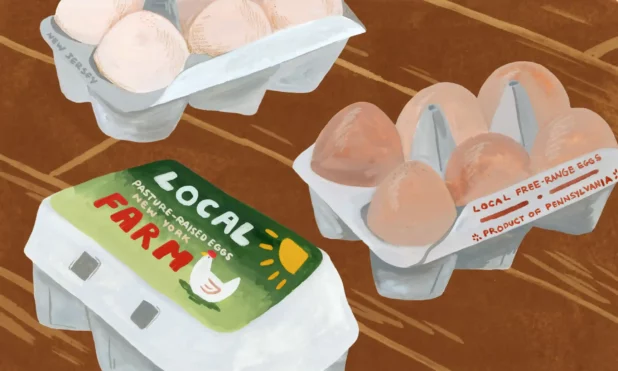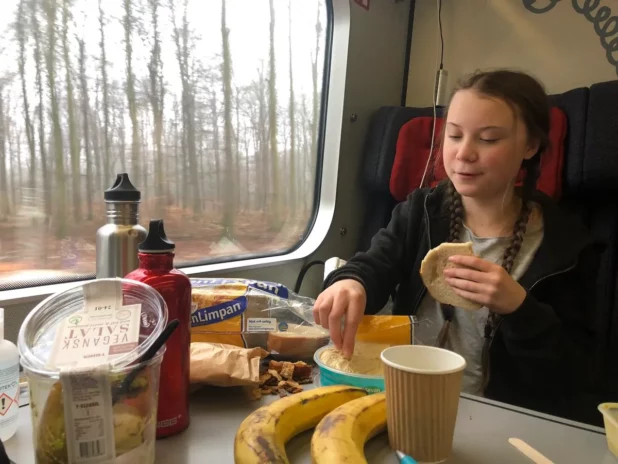The only label that is regulated is “USDA Certified Organic.”
I don’t really trust that label very much, quite frankly. They put it on food from Mexico, and I don’t know how the USDA is ensuring the processing of food in Mexico.
However, the labels “natural” and “local” have literally zero meaning. I’ve known this and talked about this forever.
Back before Amazon bought Whole Foods, it used to specialize in actual labeled “organic” food, while Trader Joe’s had stuff that said “natural.” I would tell people that label meant nothing.
Now, Amazon Whole Foods does the same thing with these “natural” and “local” labels.
If you walk into a Whole Foods in Oakland and pick up a container of non-dairy yoghurt marked “local”, you might be surprised to learn that though the company is headquartered nearby in San Francisco, the cashews the yoghurt is made of come from Vietnam, more than 7,500 miles (12,000km) away, or Ivory Coast, about 7,300 miles in the opposite direction.
This yoghurt made with ingredients from the other side of the globe points to the contradictory nature of so-called local food today: though the term holds appeal for customers, nearly two-thirds of whom perceive local food to be more environmentally friendly, experts suggest it may not always mean what you think.
“Most of it is bullshit,” says Austin, Texas-based Errol Schweizer, who led grocery merchandising for Whole Foods from 2009 to 2016. “Every retailer has a different definition [of “local”]. Even the retailers themselves will have different definitions, depending on where they are, and the original purpose of localization has totally gotten lost.”
Local food first started to attract attention against the backdrop of globalized supply chains at a time when US shoppers had become accustomed to eating quinoa grown in Bolivia or salmon caught in Norway. Local became a selling point in the early 2000s as the result of an intellectual backlash to the growing hegemony in grocery stores and prevalence of highly processed foods, says Schweizer, who points to the publishing of Michael Pollan’s The Omnivore’s Dilemma as one inflection point.
Proponents like Pollan asserted that buying local would mean fresher and healthier food with a lower carbon footprint. What followed was a “flurry of activity to figure out how to re-localize supply chains” that had been decimated by the advent of 20th-century national grocery chains, which had de-localized in the name of efficiency, says Schweizer.
There was never well-defined agreement about what the term actually meant, though. According to Food Tank founder Danielle Nierenberg, “local” is usually understood to refer to food grown within 100 miles (160km) of where it’s sold and eaten, a perception bolstered by books such as The 100 Mile Diet by Alisa Smith and JB MacKinnon. But the US Department of Agriculture’s definition of “local” in the 2008 Farm Bill includes food grown in the same state or within 400 miles (640km) of where it is finally marketed – and even that definition isn’t regulated the way a label such as “organic” is.
That’s led to a lack of clarity and consistency in how the term is deployed in supermarkets across the country, with each grocer defining the label for itself. In the produce aisle at a HarvesTime in Chicago, for example, microgreens classified as local are grown at a farm about 45 miles (70km) away in Carpentersville, Illinois. At a Union Market in Brooklyn, the “local eggs” category includes cartons from a farm 158 miles (250km) away in Pennsylvania, one 17 miles (27km) away in New Jersey and another 270 miles (430km) away in upstate New York.
Meanwhile near Dallas, Central Market posts signs with the outline of Texas promoting “local flavor” that sometimes point to items that are grown in-state, like wine from the Frio Canyon Vineyard, 340 miles (550km) away. Other times, the same sign seems to have more to do with where a food company is headquartered, as is the case with Austin-based Lamme’s Candies, 200 miles (320km) away. Lamme’s features Texas heavily in its branding but gets its chocolate from the California company Guittard, which in turn sources cocoa from Ecuador (around 2,500 miles, or 4,000km, away) and West Africa (almost 6,000 miles, or 10,000km, away) – a fact you wouldn’t find out without poking around online.
Whole Foods, HarvesTime, Union Market and Central Market did not respond to requests for comment.
If the markets wouldn’t respond, they should have called Greta.
I think her opinion on this issue is really important, no?


